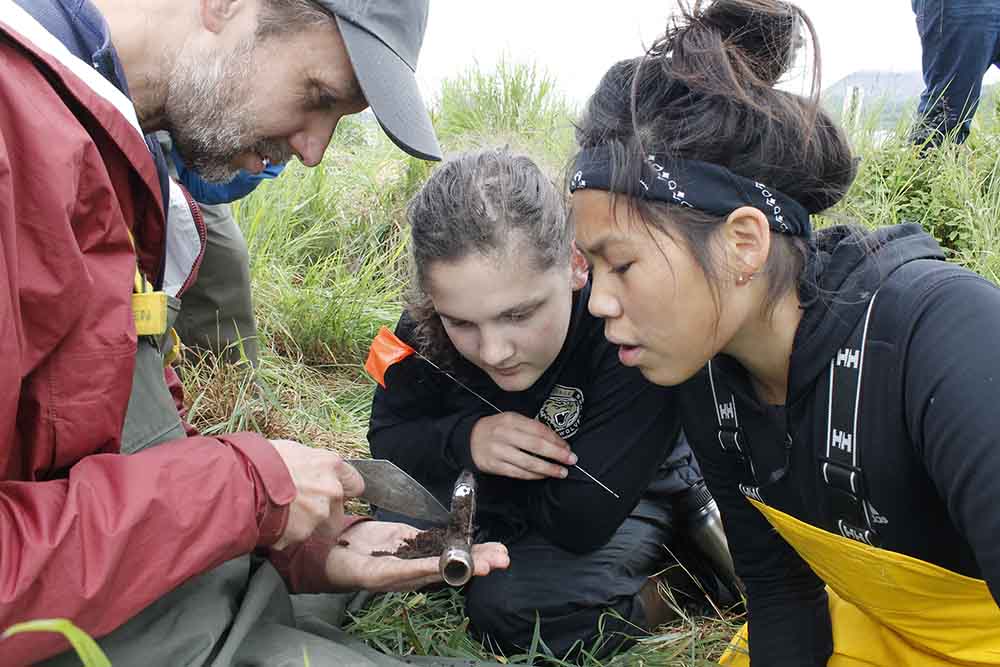
Next door to the museum is the Katirvik Cultural Center [Katirvik in Iñupiaq, Siberian Yupik, and Central Yup’ik is literally translated as “Gathering Place”], a facility designed to celebrate and share Indigenous knowledge and cultures from the Bering Strait region. Here, students participated in shaping the space as a place of learning and gathering. This included interacting with exhibits, traditional drumming and dancing, enjoying Indigenous foods, and participating in thoughtful discussions.
From Learning to Action
The content and instruction style of the camp evolved over the years to meet the unique needs and interests of the students in attendance. Social issues linked to self-identity and culture loss from western colonization are part of many Indigenous Alaskans’ experience. The individuality of students is deeply entwined with their ethnic identity and cultural socialization, and that identity may be strongly bound to a place, environment, or landscape (Nordström 2008). Through place-based education opportunities presented during Nome Archaeology Camp, instructors and mentors showed students that the revitalization and preservation of culture can be a healthy coping strategy.
As a final project, students summarized their experiences through presentations on the core subjects explored during camp. In addition to sharing what they learned, presentations were encouraged to include a direct action. Students advocated for public schools to include courses in Alaska studies, Native drumming, Alaska Native arts, and Indigenous language classes. Further, they supported a growing effort to use traditional place names and argued that state and federal regulations should enable local residents to harvest traditional foods.
Results, experiences, and action items from the five years of the Nome Archaeology Camp have been shared in classrooms, professional conferences, local newspapers, social media posts, newsletters, and in many conversations across Alaska and beyond. Students leave camp with academic credit through University of Alaska Fairbanks – Northwest Campus, competency in basic field science techniques, and an expanded understanding of the history and culture of the Bering Strait region. Many of the take-home lessons, however, are more connected to the future than the past. Instructors hope that after their time camp, the next generation of Bering Strait stewards feel empowered to ask questions and participate in cultural preservation efforts in the region they call home.
Acknowledgements
The Nome Archaeology Camp is a collaborative effort, made possible with support from Alaska Geographic, Bering Straits Native Corporation, Bureau of Indian Affairs, Carrie M. McLane Memorial Museum, City of Nome, Katirvik Cultural Center, Kawerak, Inc., Murie Science and Learning Center, National Park Service, Norton Sound Economic Development Center, Shared Beringian Heritage Program, and University of Alaska Fairbanks-Northwest Campus. Special thanks to Julie Raymond-Yakoubian, Amy Russell, Charlie Lean, Jeff Rasic, Matt Ganley, and the many elders, guest presenters, mentors, and experts who generously shared their knowledge and time. Thank you to the students of the Nome Archaeology Camp, and the families and communities who supported their participation.



